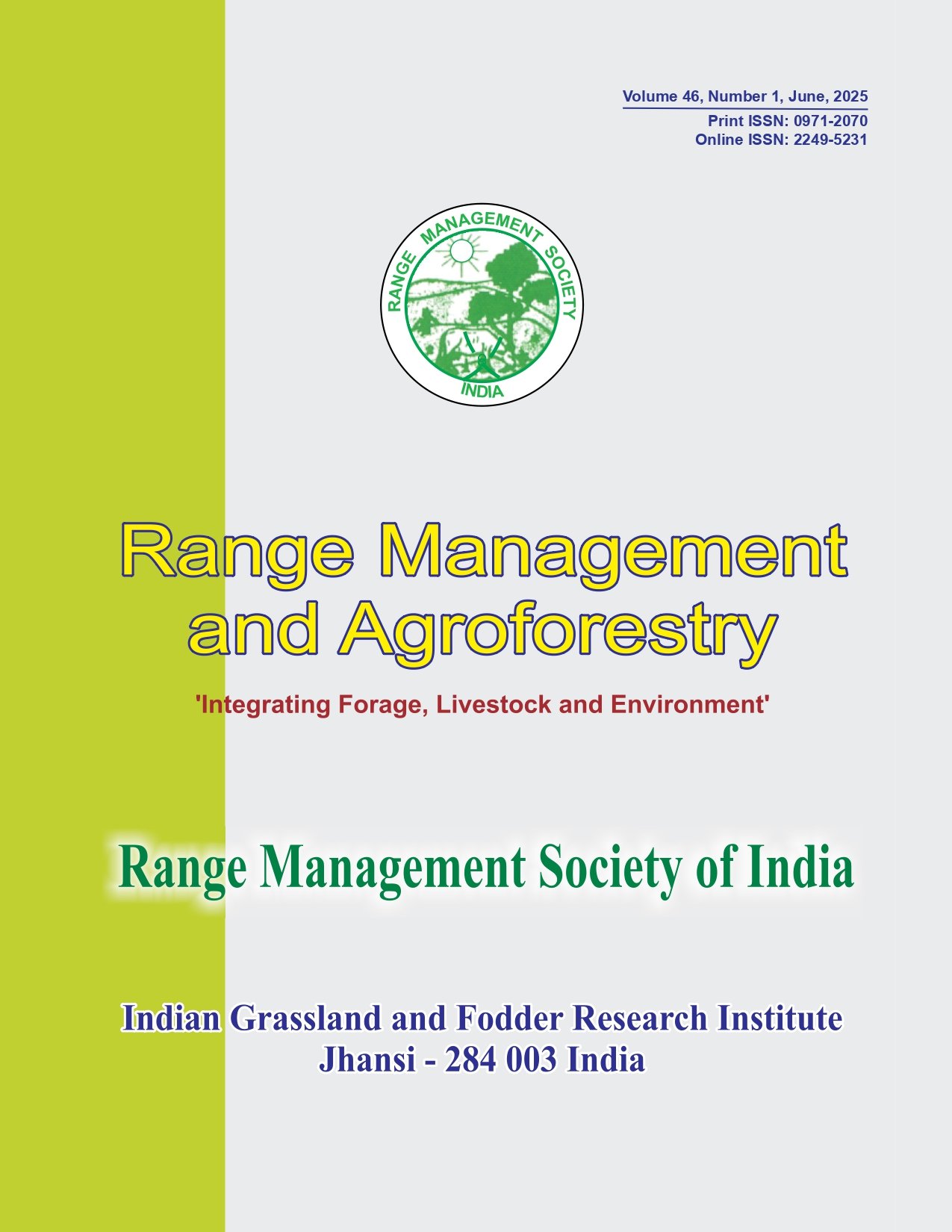Effect of physical and chemical scarification and ageing on hardseededness in Clitoria ternatea
Keywords:
Germination, Hardseededness, Pretreatment, Range legume, Seed coatAbstract
Clitoria ternatea is an important range legume for nutritional improvement of rangelands under semi-arid regions. It is perennial and hardy in nature which can survive well under semi-arid conditions on low fertile, sandy soil with limited soil moisture. The dry matter production potential is ranging from 2-3 t/ha with high protein content of 18-20% and digestibility of about 80 per cent. Due to presence of hard seed the field emergence of fresh seed of C. ternatea is less and/or delayed, resulting in poor field establishment. Fresh seed (<3 month age) of C. ternatea was exposed for different pre-treatments: physical and chemical scarifications viz. nicking (making cut on seed coat), rubbing between sand paper, soaking in H2 SO4 for 5-20 min., soaking in hot water (80oC) for 5-20 min. and in boiling water for 5 min. for evaluation of their effect on removal of hardseededness. For study of effect of ageing on level of hardseededness fresh seed, one, two, three and four year old seed were evaluated for germination. The findings revealed that highest germination (90%) was achieved by nicking followed by sand paper scarification which increased germination up to 70.5% against control (6.5%). Scarification with conc. H2 SO4 for 10 min. was at par with sand paper scarification but proportion of abnormal seedlings was increased by 3.3%. Highest normal seedlings (70.5%) were observed in two year old seed against fresh seed (6.5%). The proportion of hard seed decreased up to 8% in four years old seed but on the other hand normal seedlings also reduced up to 56.3 per cent.




